Name: Coppa Calabrese
This is going to be a simple post, detailing how to make what is probably my favorite cured meat, coppa, in the calabrese style.
The meat:
To make a coppa, you need to either purchase or butcher the collar roast for a pig. Some butchers/farms can sell you the “collar roast” that you can use as is. Otherwise, you can buy either a full pork shoulder (shown below) or a “Boston Butt” shoulder cut.
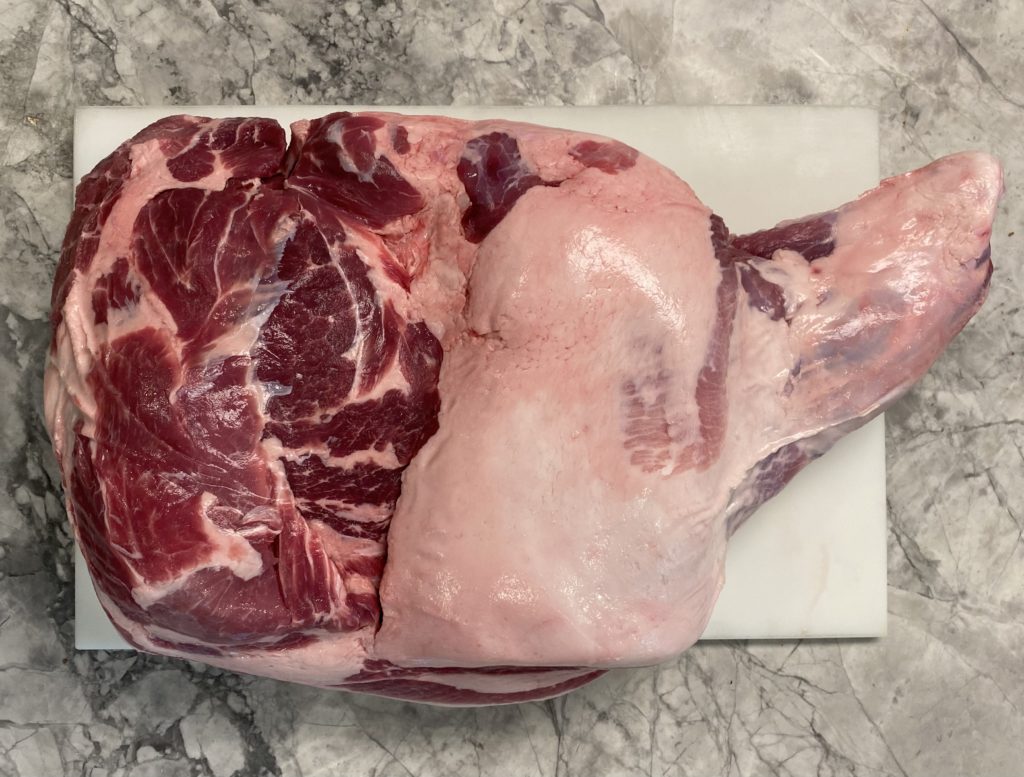
From the whole shoulder, follow the seams outlined here to cut out the coppa.
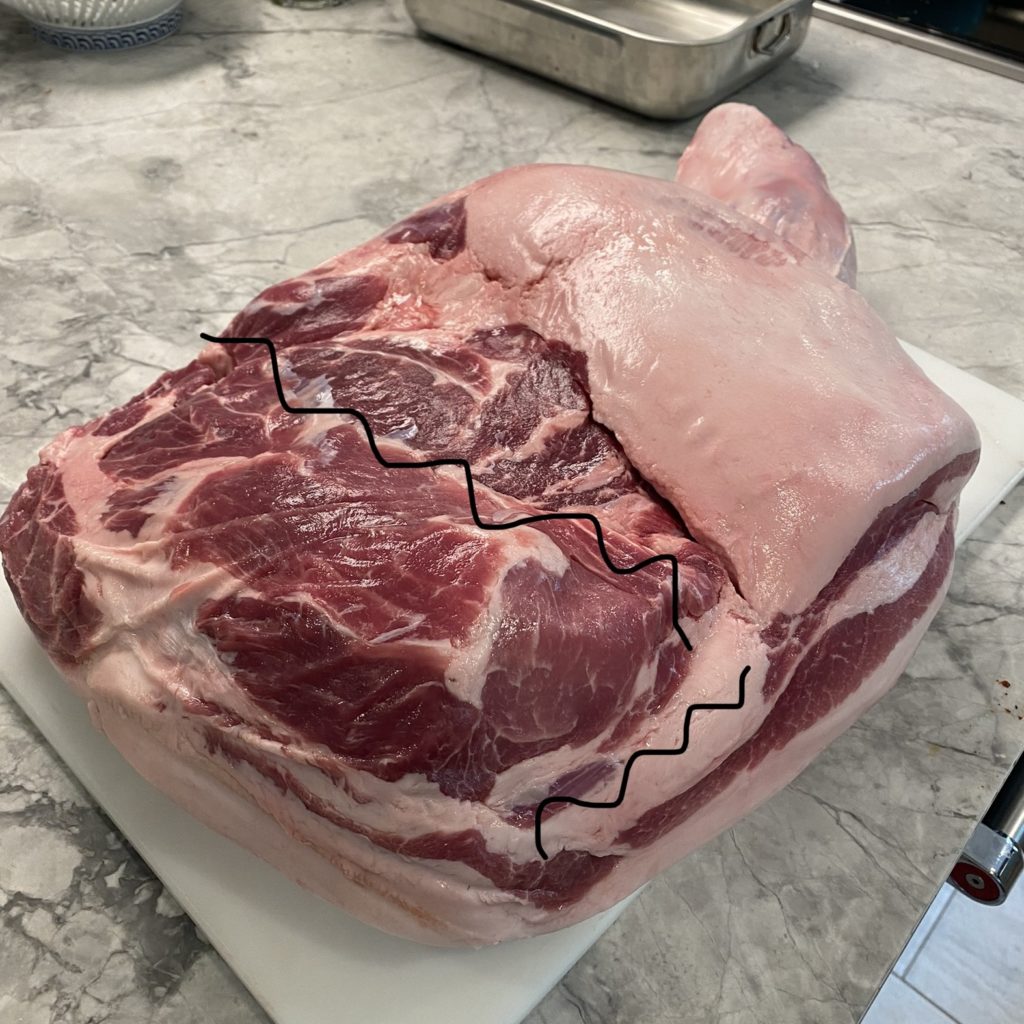
Salting (4C/40F, 3 weeks+)
Once you have the meat butchered and ready, it’s time to weigh it.

Once you have the weight, you can enter it into the interactive spreadsheet below, just fill the weight of your meat in the appropriate white cell in the spreadsheet and hit enter. There is no need to make any other changes to the spreadsheet.
Weigh all the spices and mix all the spices together.
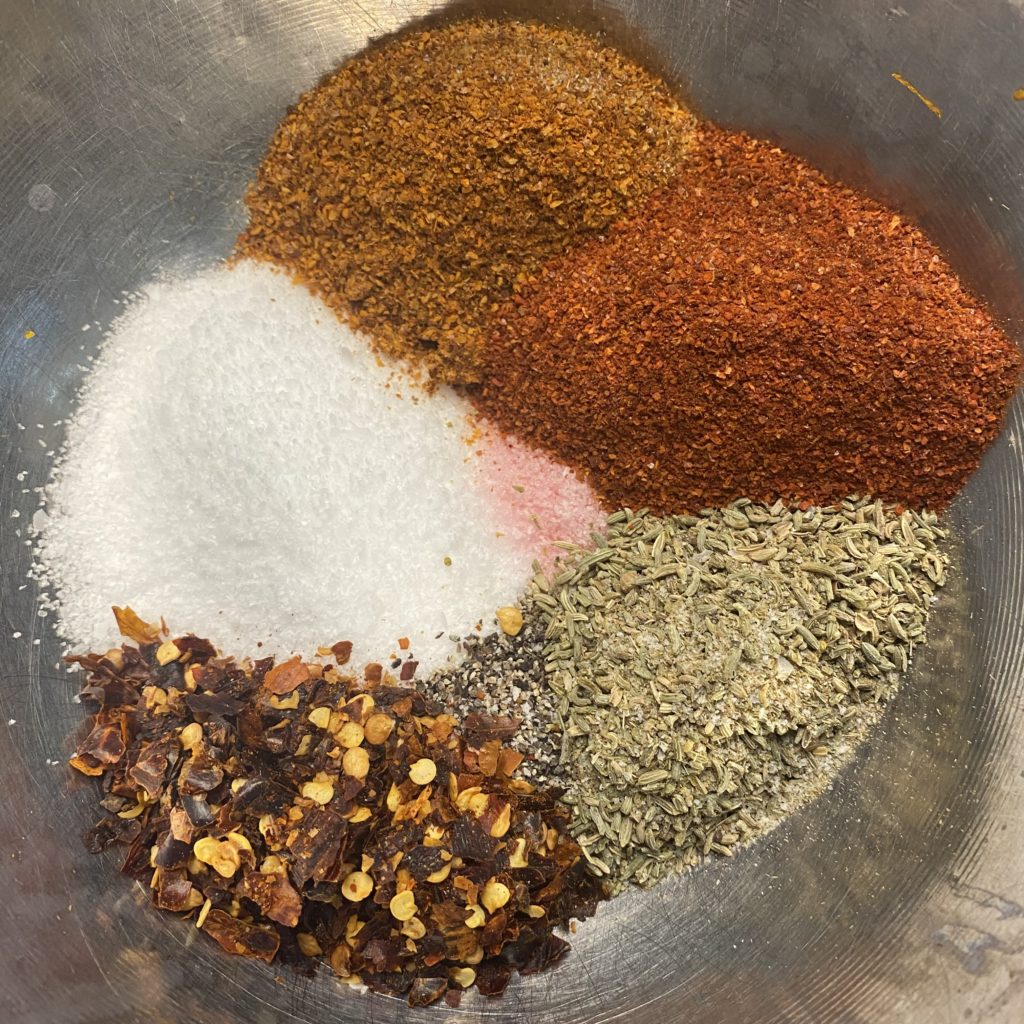
Then, cover the meat with them.
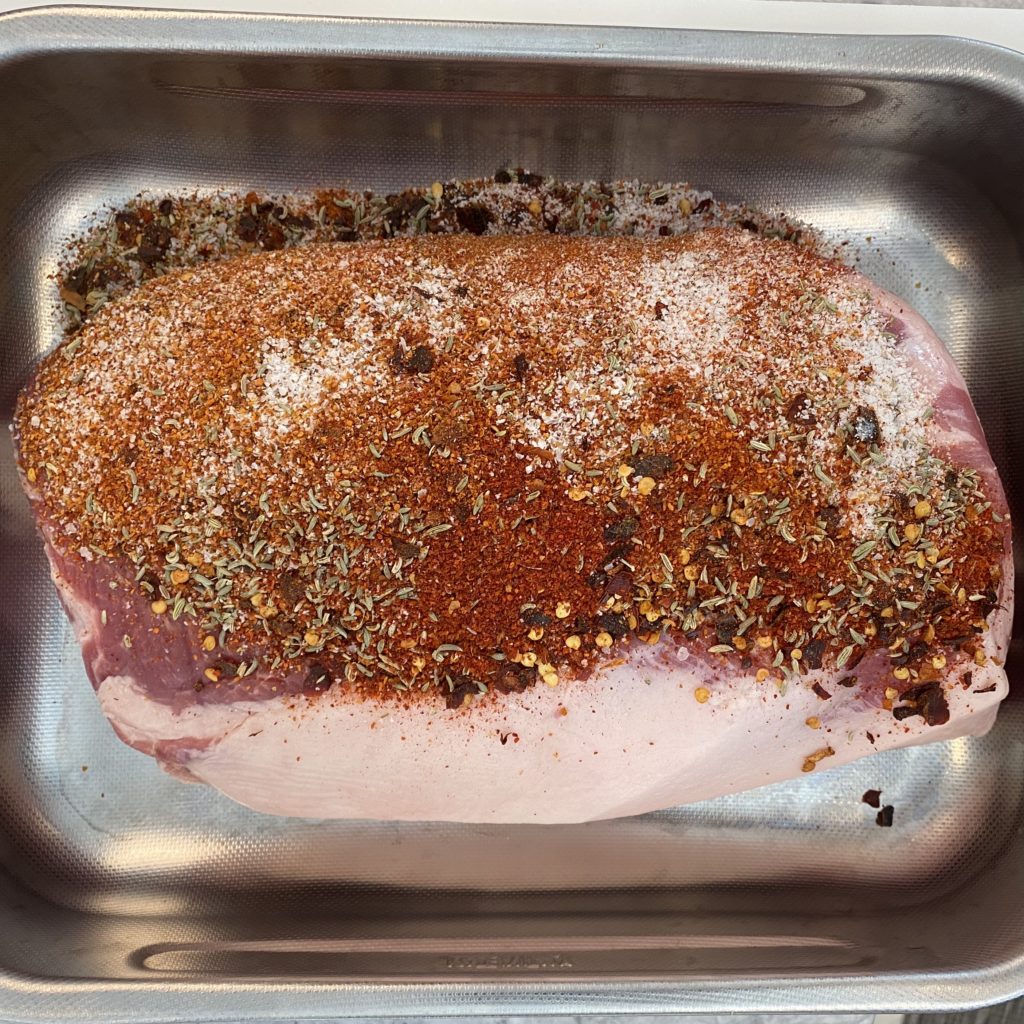
Vacuum seal it all together.
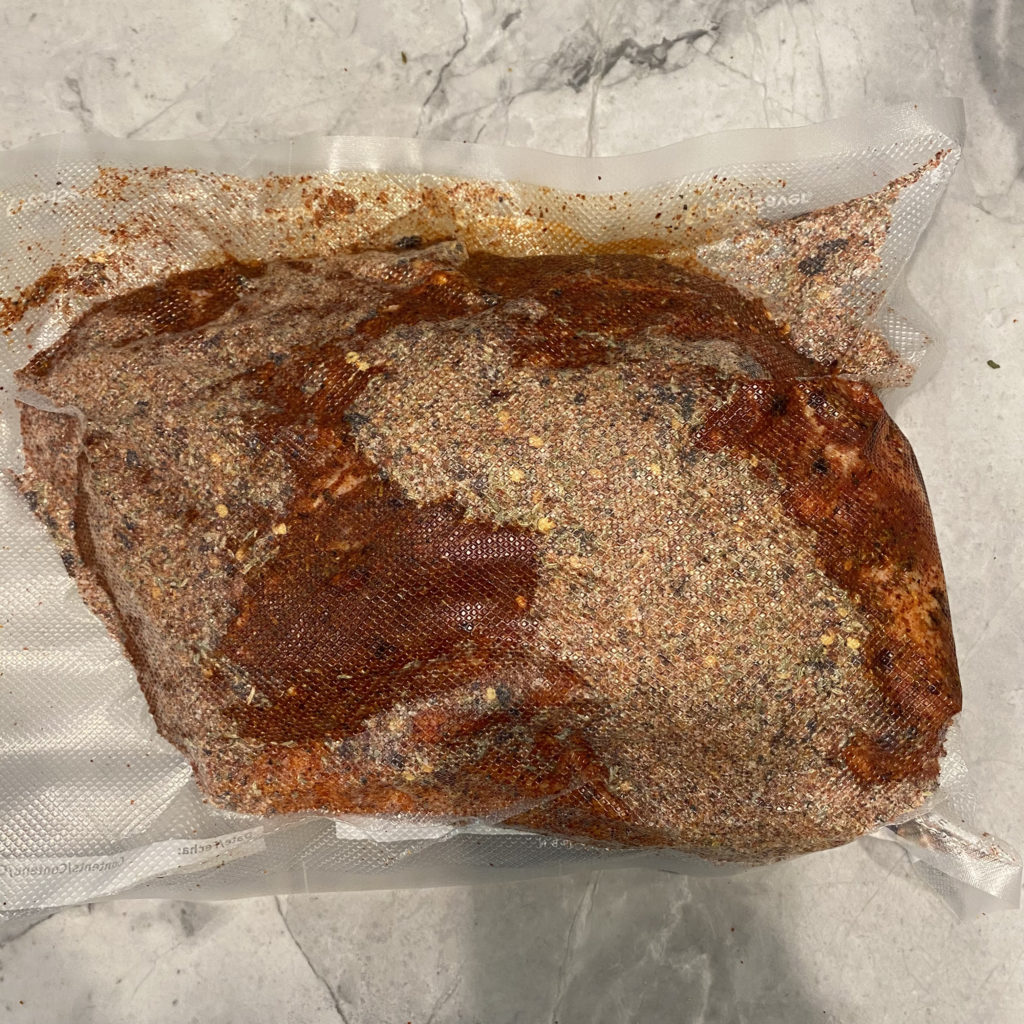
* Note: Please use common sense. Make sure the spreadsheet is working properly for you and double check any calculations that don’t seem right.
Casing
After the meat has been cured for 3+ weeks, it’s time to take it out, rinse it, and pat it dry.
Soak a large beef bung in water for as long as it takes to become relaxed and expanded (anywhere from 30 minutes to overnight).
Stuff the meat into the beef bung and tie it up, to prepare for the drying stage.
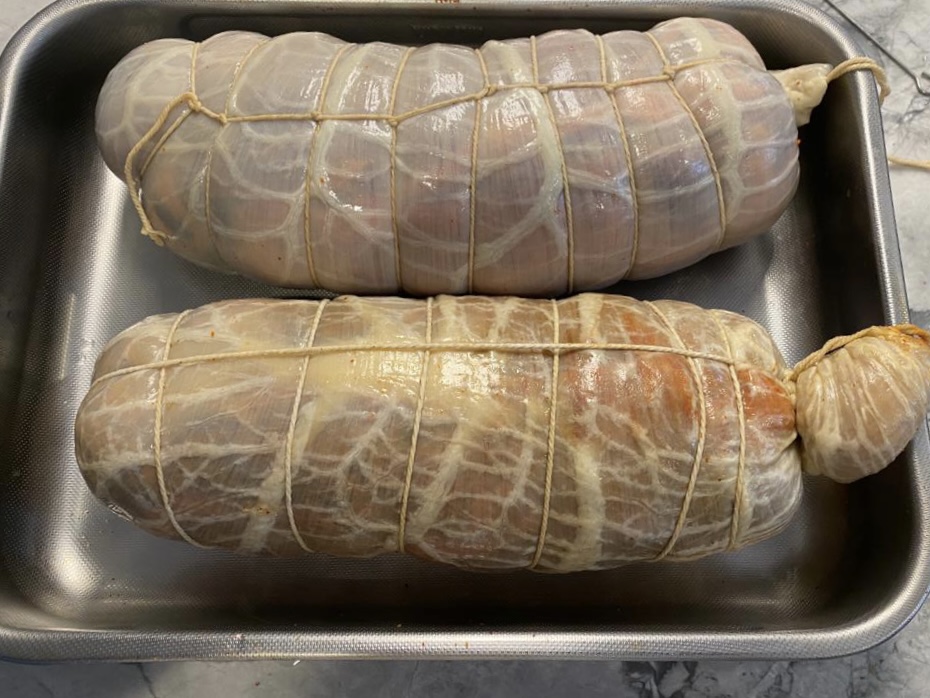
Drying (13C/55F, 70-%RH, 3-6 months)
Once your coppa is ready, hang it in the curing chamber where it should stay for 3-6 months.
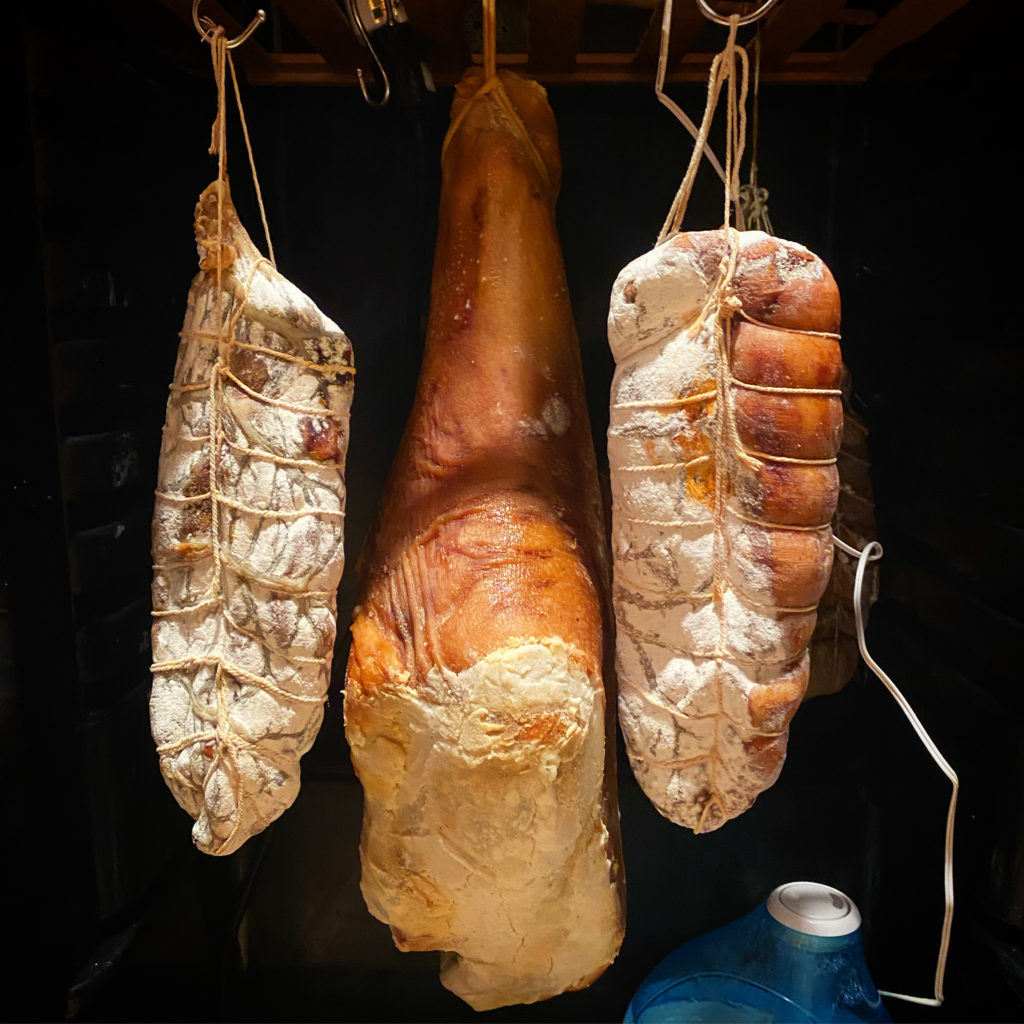
Once it has lost 30-45% of its original weight, according to your tastes, remove it from the chamber
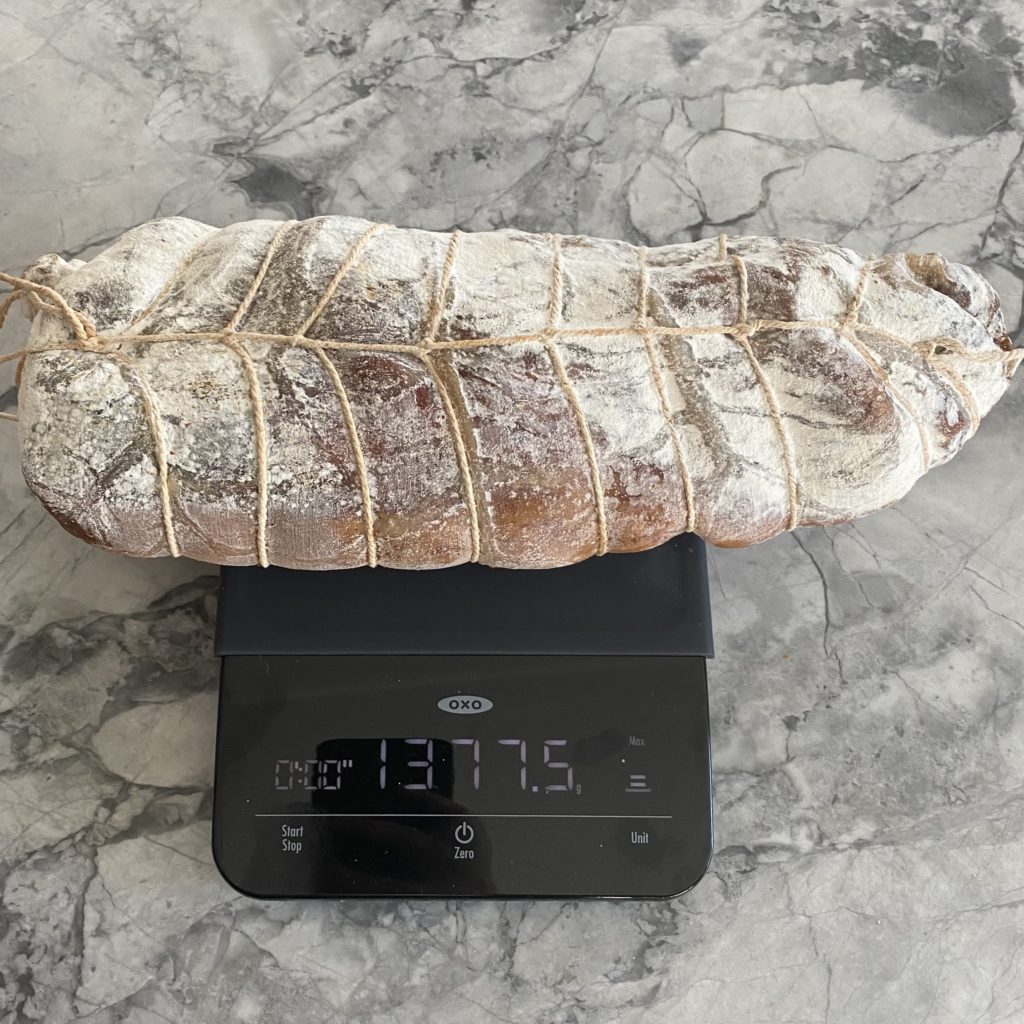
Tasting
The last is the best part of the whole process. When the right amount of time has passed, pull the coppa from the chamber, and enjoy!
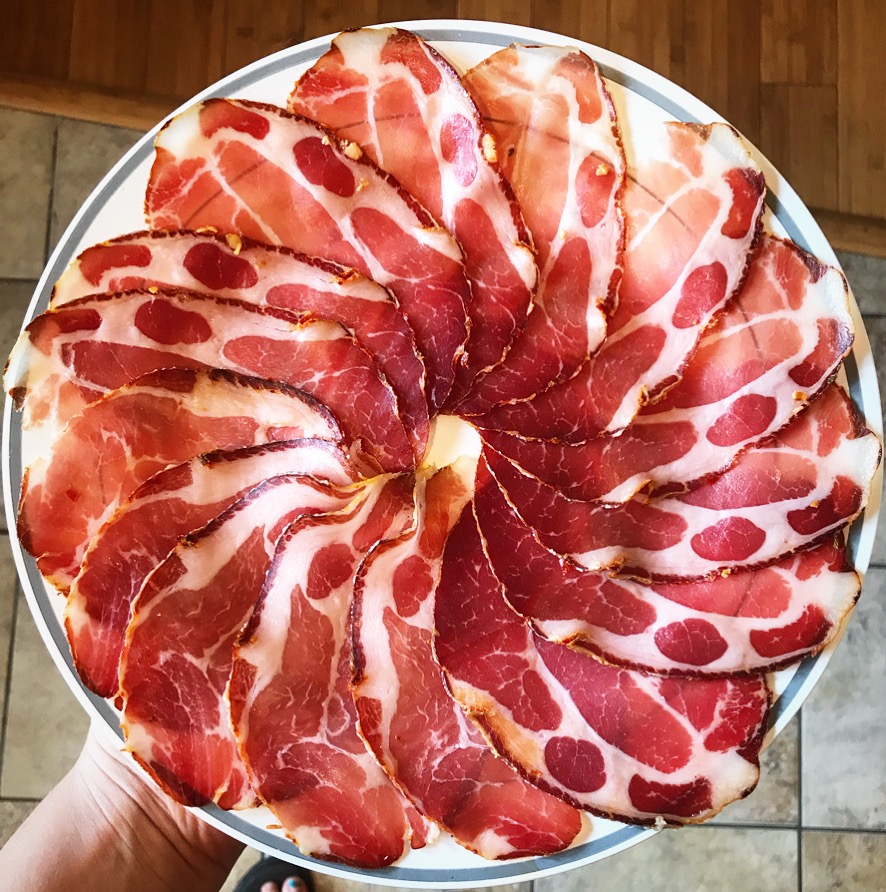
Hi, I started curing meat about a year ago and have had successful results with Beef Bresaola, Tuna Bresaola, Lomo, Lomito, Coppa and Biltong. I only use whole muscle meats and equilibrium cures at 2.75-3% salt and 0.25% cure #2 + spices. My work has tasted fine , but it is a bit salty for me. I see that this recipe uses 2.25% salt and will try that on my next cure. I assume that this amount of salt is acceptably safe for all your recipes. Is that correct?
And one more question. How low can you go? I have been unable to find info on how low a percentage of salt + 0.25% cure #2 is safe to use under reasonable and thorough processing and curing conditions.
BTW, kudos on your site. It It is beautiful, informative and clearly professional from the gastrochemical point of view. I wish I had seen it a year ago. It would have saved me some consternation.
Thank you for your efforts.
Thanks for your very nice comments! I have adjusted my salt to a total of 2.5% (2.25% salt 0.25% cure #2) and have had a lot of success with that. I’ve had friends who have gone down to 2%, and they’ve reported that that low it picked up a weird texture and didn’t seem quite so safe, so I’ve ben sticking with 2.5% total lately. There are a bunch of graphs on this, and basically it depends on multiple factors, from temperature to ph to salt % etc. Probably more factors than we are controlling, which is why I’m happy at 2.5%.